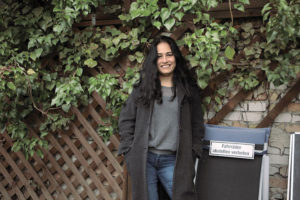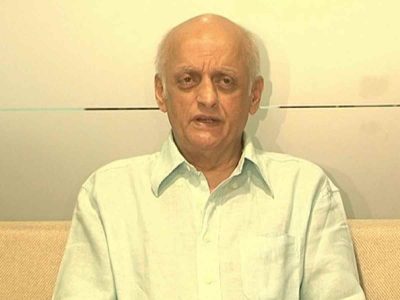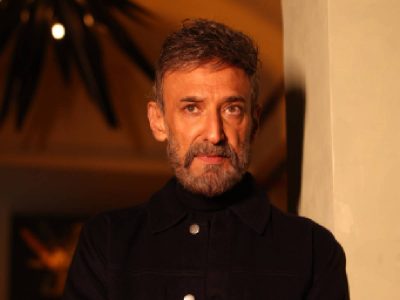Pakistani artist Bani Abidi found inspiration in a strange place — Islamabad’s Diplomatic Enclave. She tells Patriot about the tedious protocols involved
Shifting weight from one foot to another, hands folded behind or clutching onto folders of documents waiting in lines to be frisked, the nervousness is palpable.
Reflecting the psychology of visa waiting rooms, embassy protocols and the nervous anticipation of visa applicants who are hoping to access international travel from cities in South Asia, a short film captures it perfectly.
Aptly titled The Distance from Here, Pakistani artist Bani Abidi, gleaned the concept from frequent visits to the ‘Diplomatic Enclave’ in Islamabad, gently observing the gestures of her fellow visa applicants. Their conversations and questions, the spontaneous local economy that props up to enable the time of waiting and preparation, is recreated quite deftly. It features the forbidding architecture and processes of permission that strip people of their belongings, and separate and organise them into obedient bodies.
Bright yellow lines are drawn in a parking lot, where people wait anxiously, as the sound of typewriters and beeps of scanners provide the background score. Made in 2010, the film still is relevant in today’s times. It serves as a homage to everyone who feels scared and unsure about whether they will ever get to make their journey.
The film is set to be screened as the second part of Experimenter’s online film and moving image program ‘Filament’. The program features films by Abidi as a four-part online exhibition, embedding the films on Experimenter’s website for 10-days each.
Born in Karachi, Abidi is now working between Berlin and Karachi and uses video and photography to comment on politics and culture, often through humorous and absurd vignettes. The exhibition weaves a selection of Abidi’s moving-image work over the last decade.
Abidi shares with Patriot what got her working on this film, the tedious protocols that have remained the same till date and the impossibility of travel between India and Pakistan.
The Distance from Here gives a glimpse of bureaucracy, national identity and a human ambition to seek beyond one’s current situation. What propelled you to start working on the film?
Just the drama of the fear-inducing steps and protocols required to get somewhere, the thought that making it difficult for someone to travel might discourage a person from doing so. The self-protectionist jargon of border control, the constant humiliation and the players and positions of power that one encounters along the way of just trying to reach a loved one across the world, each more hideous and exploitative than the other. There is, for instance, the classic character of the local desi visa officer who we all know, who adopts the arrogance of the random goraembassy he or she may be working for with absolute glee and treats his or her own people with a total lack of empathy. Little pathetic gestures of power asserted over others.

What are the key aspects that you had to keep in mind while recreating the scenes in the waiting rooms and the queues?
I was interested in portraying the temperature, for one. So I went to great lengths to create the outdoor waiting area in a large barren space without a spot of shade. And then by contrast the air-conditioned, cold, marble-floored interior of the embassy waiting room. The psychological effect of both, waiting in the blistering hot sun, and then in the artificial, silent interior of the embassy are moments I remembered very clearly from my own memories of waiting. But the film is about the protocols of humiliation that we accept as a given, because of being citizens of highly classist and feudal societies. Deadpan modes of acceptance, chugging along with forbearance…that’s what my characters are embodying.
You had created this work in 2010, how topical and pertinent do you think the work still is, given growing tensions between nations and increased surveillance at borders?
Travel, access and visa regimes between the global South and the Western hemisphere, primarily, have always been fraught and seeped in questions of power and subservience. The nature of border controls keeps on changing but has always been there, and will keep on mutating into something worse. The saddest part for me is the impossibility of visas and travel between Pakistan and India now, given the current political climate. It’s a very clever and highly effective mechanism, meant to foster the slow growth of hatred and jahaalathin an already brainwashed populace.
The film reflects the insecurity and anxiousness among people waiting in lines. Do you think the scenes at visa waiting rooms have changed much in the past decade, especially at the time of Covid-19 when travel is being restricted?
We have to see how Covid-19 changes society, it’s a bit early to theorise or predict whether it affects things forever. And I think the idea of waiting in a lot of my work is metaphoric while being particularly articulated within certain situations. I actually think there are going to be many more people waiting for things in the future, with growing inequality and deprivation across the world. It is how the lines of waiting people organise themselves, relate and create something new that is meaningful.
The film can be watched at the official website of Experimenter on July 20–30
(Cover: A shot from the film Courtesy- proyector.info)





